An Insider's Guide to Walk-In Wardrobe Measurements
Take a look at essential wardrobe measurements, along with some considerations to guarantee your 'robe is well designed
Our wardrobes are used numerous times a day. Yet when it comes to walk-in ’robes, we don’t always measure up and plan their layout with the same attention to detail as we would for, say, the kitchen or bathroom. I advise clients to take into account some standard measurements and the mix of shelving, drawers and hanging space they’d like, and together with a wardrobe specialist, we plan the whole unit to achieve maximum functionality and storage capacity. So, where to start? Let’s begin with key functions and need-to-know measurements.
Tip: Consider including glass doors. These will stop the dust settling on any clothes while letting you see and access things easily. A mirrored backboard also helps reflect light, and helps makes the space seem larger.
Ready to redo your wardrobe? Find a specialised wardrobe designer near you for a custom design and clever joinery
Ready to redo your wardrobe? Find a specialised wardrobe designer near you for a custom design and clever joinery
What’s the best height for hanging rails in a wardrobe?
Dresses and long coats need long hanging space, while shirts, skirts, suits, jackets and trousers need shorter hanging space. A good starting point is to allow a height of 940 millimetres for short hanging space and 1880 millimetres for long garments. Position your hanging rails at these heights, though remember to add a little extra above and below for your coat hangers.
The proportion of how much ‘long’ versus ‘short’ hanging space needed in your wardrobe will vary, but a minimum of a quarter of all hanging space devoted to long clothing is a good start. And don’t forget that some clothes are best kept folded and not hung, such as woollen jumpers. This helps cut down on the amount of hanging space you require.
Dresses and long coats need long hanging space, while shirts, skirts, suits, jackets and trousers need shorter hanging space. A good starting point is to allow a height of 940 millimetres for short hanging space and 1880 millimetres for long garments. Position your hanging rails at these heights, though remember to add a little extra above and below for your coat hangers.
The proportion of how much ‘long’ versus ‘short’ hanging space needed in your wardrobe will vary, but a minimum of a quarter of all hanging space devoted to long clothing is a good start. And don’t forget that some clothes are best kept folded and not hung, such as woollen jumpers. This helps cut down on the amount of hanging space you require.
Tip: Talk to your designer about internal options on how to gain extra space, including height. If your clothes are hung up high you can add pull-down hanging rods, as seen here, which allow you to hang things higher – and therefore gain more space – simply pull down the handle and your upper hanging racks will descend into the room.
What’s the ideal wardrobe shelf depth and height, and how big should drawers be?
A bank of drawers is often built to an overall height of 800 millimetres, which allows for three drawers each at 250 millimetres high and a kickboard of 50 millimetres, with a depth of 450 millimetres.
Of course, with custom joinery you can tweak these measurements to suit your storage needs. Shelving is commonly 450 millimetres deep and often includes pegs to allow you to adjust the height of the shelves.
Tip: Try to keep some consistency of lines throughout the space. This ensures the space is visually pleasing – the repetition of alternate drawer fronts and shelving here is a good example of how to achieve this.
Browse more inspirational wardrobes by Australian designers
A bank of drawers is often built to an overall height of 800 millimetres, which allows for three drawers each at 250 millimetres high and a kickboard of 50 millimetres, with a depth of 450 millimetres.
Of course, with custom joinery you can tweak these measurements to suit your storage needs. Shelving is commonly 450 millimetres deep and often includes pegs to allow you to adjust the height of the shelves.
Tip: Try to keep some consistency of lines throughout the space. This ensures the space is visually pleasing – the repetition of alternate drawer fronts and shelving here is a good example of how to achieve this.
Browse more inspirational wardrobes by Australian designers
What’s the best storage technique for walk-in-wardrobes?
Try to maximise all the space you have by adding storage up to the ceiling in your wardrobe. Use higher shelving and pigeon holes to store off-season clothing, travelling items or spare linen.
If your ceilings are 2500 millimetres high or more, this can literally mean an extra cubic metre of storage space, which is nothing to sniff at.
Tip: Try to keep items that are stored up top labelled and in a matching group of dust-proof containers. This is both visually attractive and very practical.
Try to maximise all the space you have by adding storage up to the ceiling in your wardrobe. Use higher shelving and pigeon holes to store off-season clothing, travelling items or spare linen.
If your ceilings are 2500 millimetres high or more, this can literally mean an extra cubic metre of storage space, which is nothing to sniff at.
Tip: Try to keep items that are stored up top labelled and in a matching group of dust-proof containers. This is both visually attractive and very practical.
How much space do I need to store shoes?
Any fashionista will tell you not to forget shoe storage when planning a designer wardrobe, as well as the importance of keeping footwear looking good and ensuring ease of access.
When constructing shelving for shoes, a good starting point is to allow a 220- to 260-millimetre height for heels and flats, and the same for most men’s shoes; roughly double that for boots. Bear in mind that you’ll need to allow for even more space if you have boots that don’t have pliant shafts.
If you’re going to incorporate pigeon holes for individual pairs of shoes, you’ll need 220 to 300 millimetres in width (depending on your shoe size), a depth of at least 350 millimetres for women’s shoes, and a tad more for men. You might also be interested in angled shoe racks – ask your wardrobe specialist or interior designer for options.
Any fashionista will tell you not to forget shoe storage when planning a designer wardrobe, as well as the importance of keeping footwear looking good and ensuring ease of access.
When constructing shelving for shoes, a good starting point is to allow a 220- to 260-millimetre height for heels and flats, and the same for most men’s shoes; roughly double that for boots. Bear in mind that you’ll need to allow for even more space if you have boots that don’t have pliant shafts.
If you’re going to incorporate pigeon holes for individual pairs of shoes, you’ll need 220 to 300 millimetres in width (depending on your shoe size), a depth of at least 350 millimetres for women’s shoes, and a tad more for men. You might also be interested in angled shoe racks – ask your wardrobe specialist or interior designer for options.
How should I store wardrobe accessories and jewellery?
Having a place for everything (and keeping everything in its place) helps you to stay on top of what you have, making planning what to wear each day easier. Merchandising, or displaying bags, scarves, hats, jewellery and accessories in a similar way to high-end shops, is sure to put a smile on your face every time you walk into your robe area. If you decide on this kind of look, don’t forget to allow space for being able to store and style your favourite pieces beautifully.
Tip: A series of smaller pigeon holes or drawers for ties or belts is a neat way of storing and displaying otherwise tricky items. Also leave an open bench space for displaying or keeping awkward items, such as hats or unusual jewellery.
Having a place for everything (and keeping everything in its place) helps you to stay on top of what you have, making planning what to wear each day easier. Merchandising, or displaying bags, scarves, hats, jewellery and accessories in a similar way to high-end shops, is sure to put a smile on your face every time you walk into your robe area. If you decide on this kind of look, don’t forget to allow space for being able to store and style your favourite pieces beautifully.
Tip: A series of smaller pigeon holes or drawers for ties or belts is a neat way of storing and displaying otherwise tricky items. Also leave an open bench space for displaying or keeping awkward items, such as hats or unusual jewellery.
What’s the best lighting for walk-in-wardrobes?
Whether from natural or artificial sources, you’ll need plenty of lighting in your walk-in wardrobe. A skylight or picture window that can be opened is a great way to illuminate and ventilate the space, but if that’s impossible to install, keep to warm-white down lights. Consider adding a gorgeous pendant light if you have the space as it ups the glam stakes enormously.
And speak to your manufacturer about installing LED lighting above hanging rods or shelves and to guide your way along the floor – it really does help you see everything easily.
Whether from natural or artificial sources, you’ll need plenty of lighting in your walk-in wardrobe. A skylight or picture window that can be opened is a great way to illuminate and ventilate the space, but if that’s impossible to install, keep to warm-white down lights. Consider adding a gorgeous pendant light if you have the space as it ups the glam stakes enormously.
And speak to your manufacturer about installing LED lighting above hanging rods or shelves and to guide your way along the floor – it really does help you see everything easily.
How big should a wardrobe mirror be?
As for mirrors, you’ll need at least one that is full length to check yourself out from top to toe, and possibly additional smaller mirrors for when you need to get close up to fix a tie or scarf. Alternatively, you might choose to have mirrored door fronts (just beware the extra cleaning required to hide those fingerprints).
Tip: If you are fortunate enough to have room for a make-up station in your wardrobe or dressing room, add a mirror over a dressing table and surround it with large filament globes for extra clarity or subtle LED lights to light your face evenly from either side.
As for mirrors, you’ll need at least one that is full length to check yourself out from top to toe, and possibly additional smaller mirrors for when you need to get close up to fix a tie or scarf. Alternatively, you might choose to have mirrored door fronts (just beware the extra cleaning required to hide those fingerprints).
Tip: If you are fortunate enough to have room for a make-up station in your wardrobe or dressing room, add a mirror over a dressing table and surround it with large filament globes for extra clarity or subtle LED lights to light your face evenly from either side.
Should a walk-in wardrobe have clear fronts?
Clear-fronted wardrobe doors and drawer fronts not only help you find what you’re looking for easily, they also look super smart. Glass shelves for accessories look beautiful too, and allow light to stream into these areas. They won’t offer the neat, streamlined aesthetic created by opaque drawer and cupboard fronts, though in practical terms they work well.
That said, if your wardrobe has a skylight or window that allows strong, direct sunlight to shine on your clothes, clear drawer and cupboard fronts can lead to faded garments.
Because of this, make sure you keep a bank of drawers or at least one cupboard with a solid door as you may want to keep some garments, such as fragile vintage clothing, out of the light and stored in a dark, cool place.
Clear-fronted wardrobe doors and drawer fronts not only help you find what you’re looking for easily, they also look super smart. Glass shelves for accessories look beautiful too, and allow light to stream into these areas. They won’t offer the neat, streamlined aesthetic created by opaque drawer and cupboard fronts, though in practical terms they work well.
That said, if your wardrobe has a skylight or window that allows strong, direct sunlight to shine on your clothes, clear drawer and cupboard fronts can lead to faded garments.
Because of this, make sure you keep a bank of drawers or at least one cupboard with a solid door as you may want to keep some garments, such as fragile vintage clothing, out of the light and stored in a dark, cool place.
Should a walk-in-’robe have doors?
If you decide to add doors to keep your wardrobe looking ordered or to protect clothes from dust or sunlight, there are lots of options available. Try timber-veneer finishes, two-pack polyurethane finishes available in almost any colour, or frosted glass.
And if you decide to bypass doors altogether for your wardrobe and opt for open storage, there are plenty of beautiful ways to detail this too (many of which are pictured in this article).
Tip: Mirrored doors will make a walk-in wardrobe look bigger and are super practical too.
If you decide to add doors to keep your wardrobe looking ordered or to protect clothes from dust or sunlight, there are lots of options available. Try timber-veneer finishes, two-pack polyurethane finishes available in almost any colour, or frosted glass.
And if you decide to bypass doors altogether for your wardrobe and opt for open storage, there are plenty of beautiful ways to detail this too (many of which are pictured in this article).
Tip: Mirrored doors will make a walk-in wardrobe look bigger and are super practical too.
Your turn
What are your top tips for a well-designed wardrobe? Share them in the Comments below, like this story, save the images for inspiration and join the conversation.
More
Need more measurements for your new build or renovation? Keep These Dimensions in Mind When Planning a New Home Office
What are your top tips for a well-designed wardrobe? Share them in the Comments below, like this story, save the images for inspiration and join the conversation.
More
Need more measurements for your new build or renovation? Keep These Dimensions in Mind When Planning a New Home Office





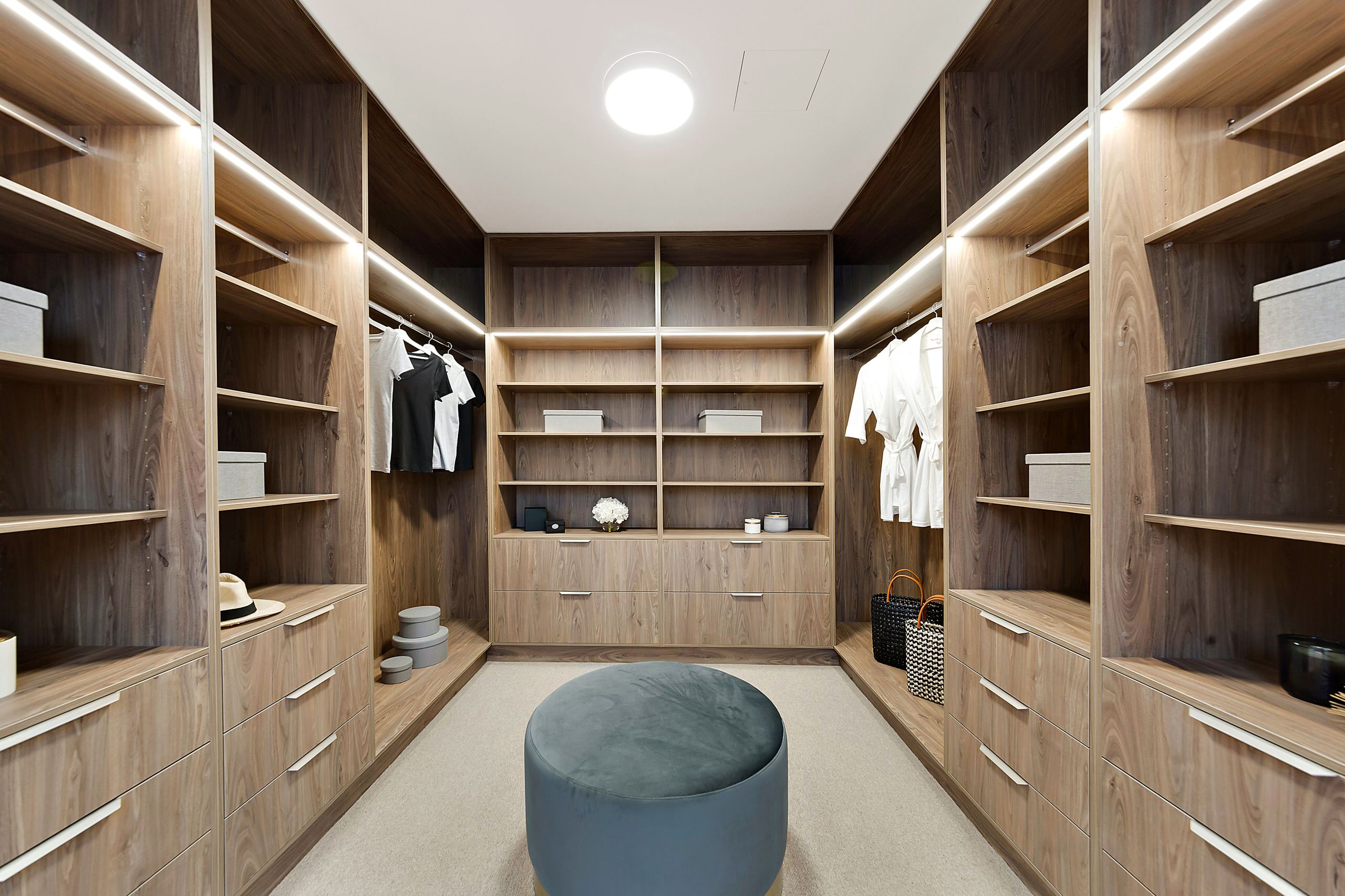
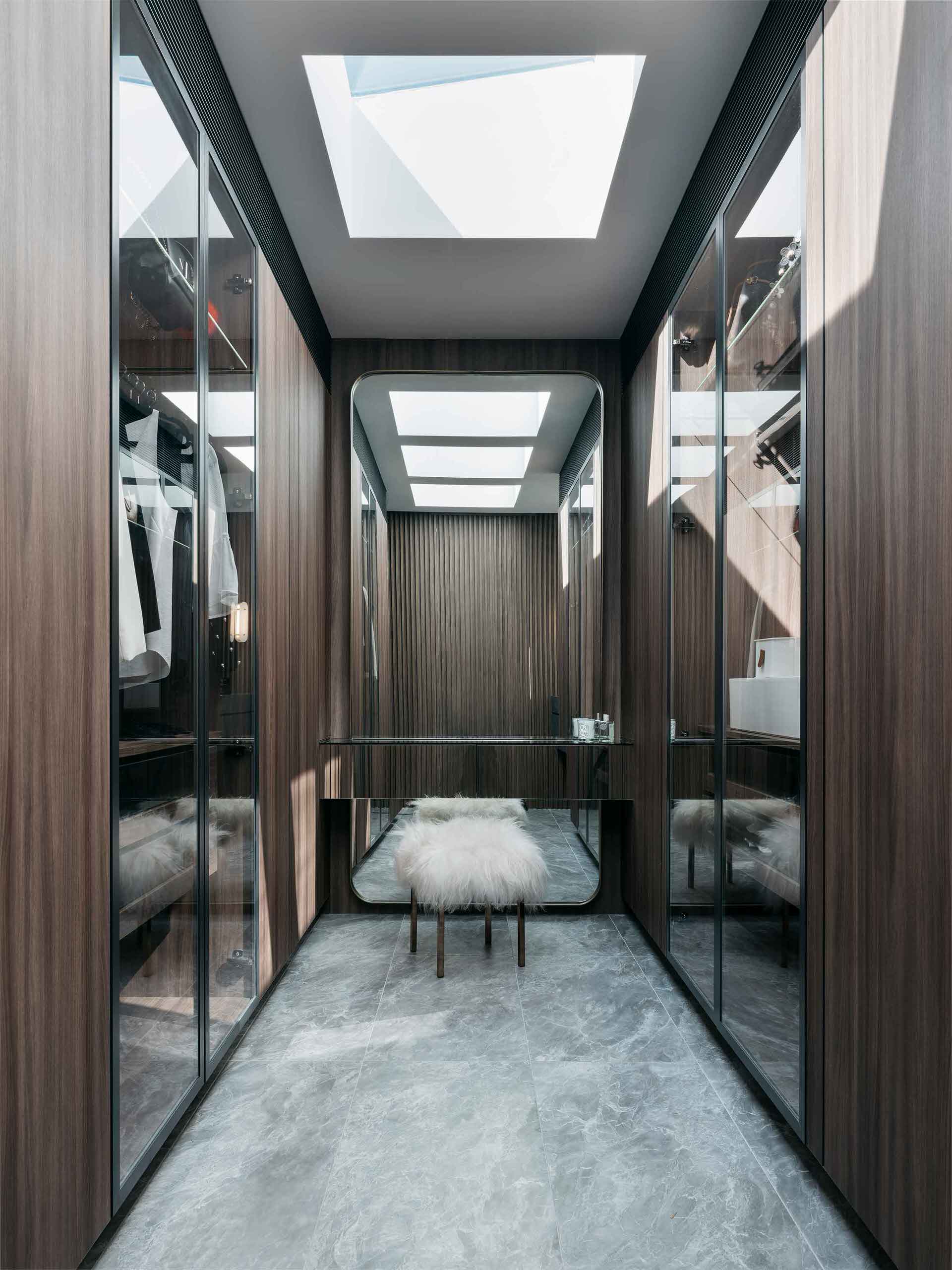


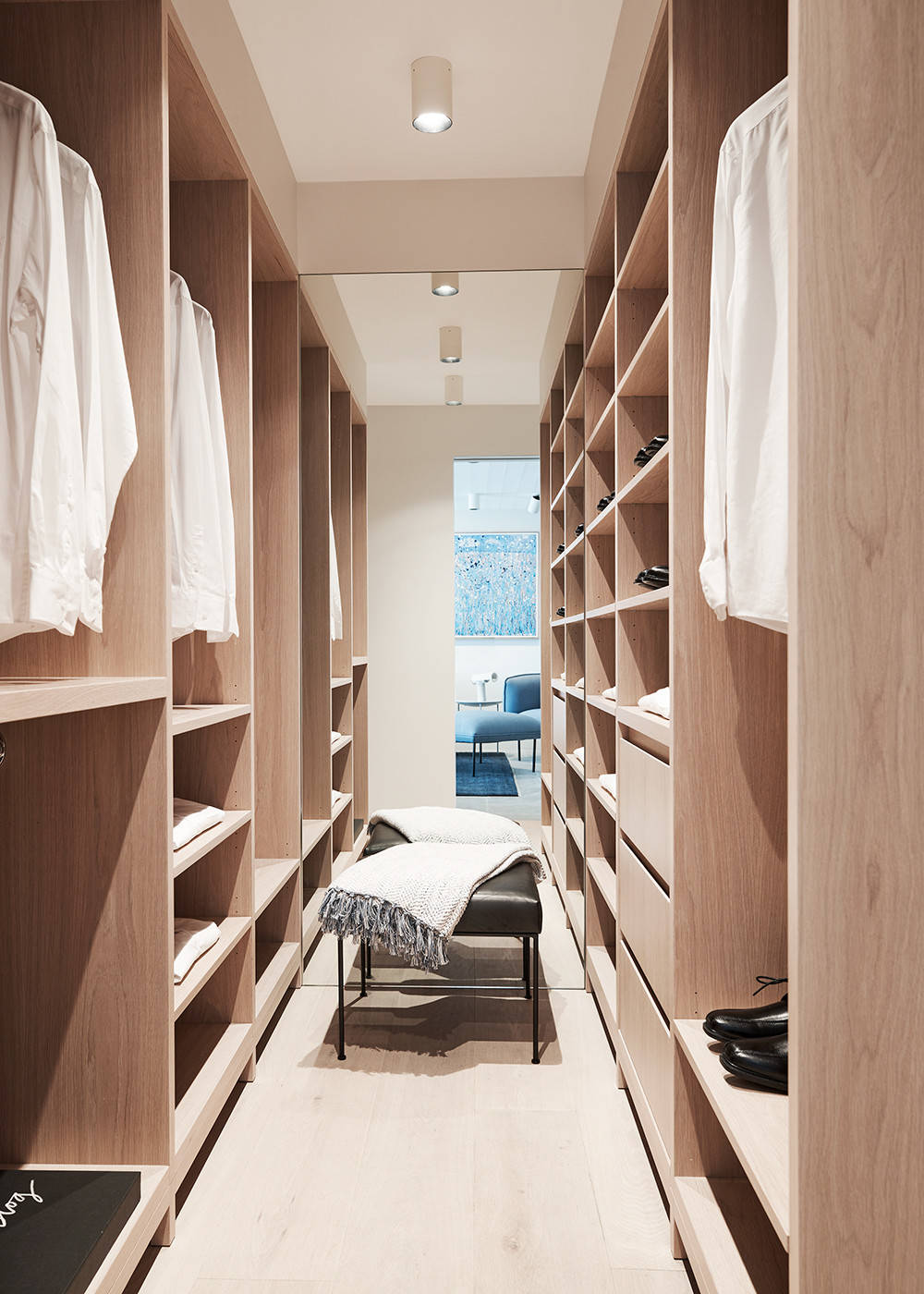
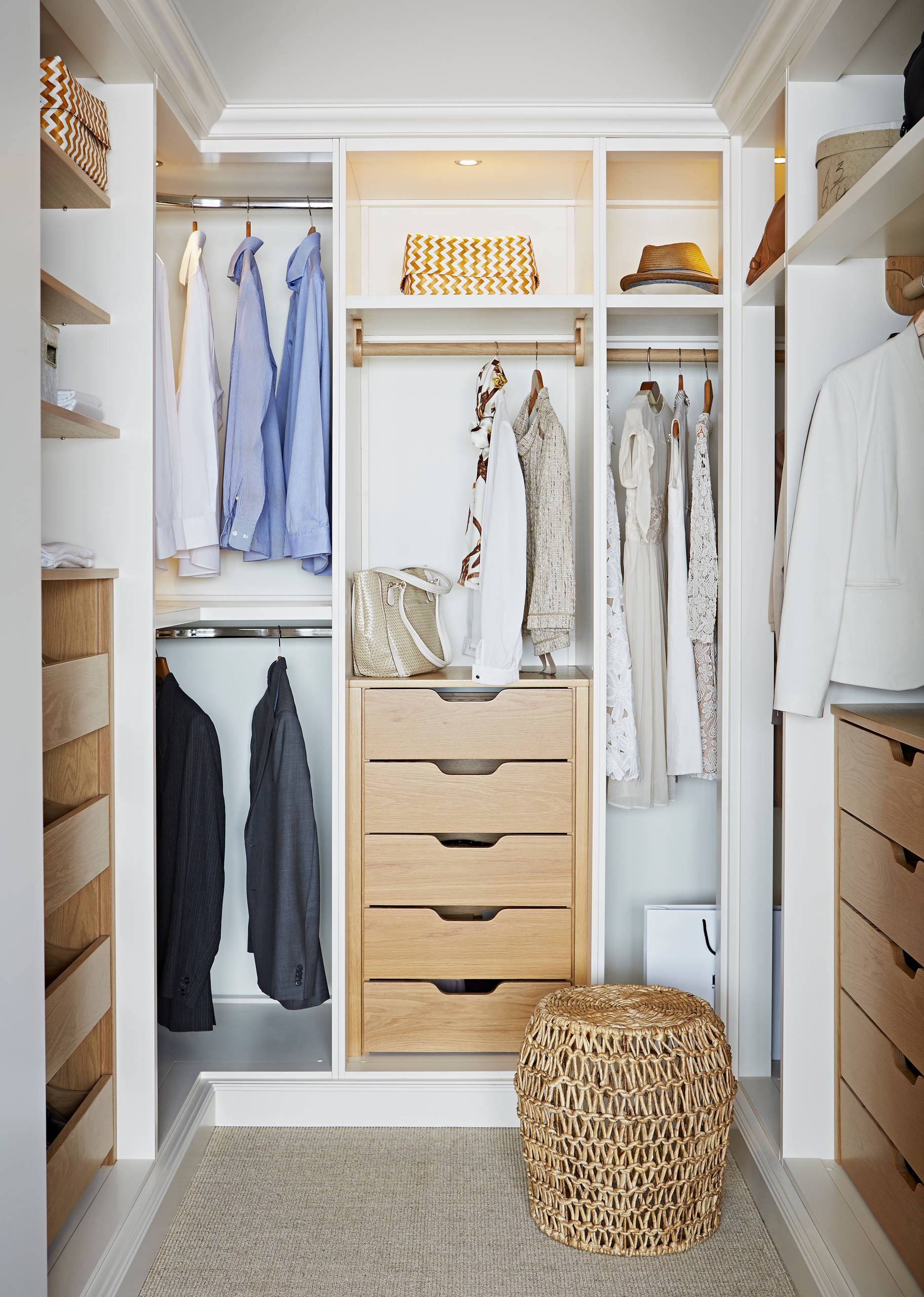
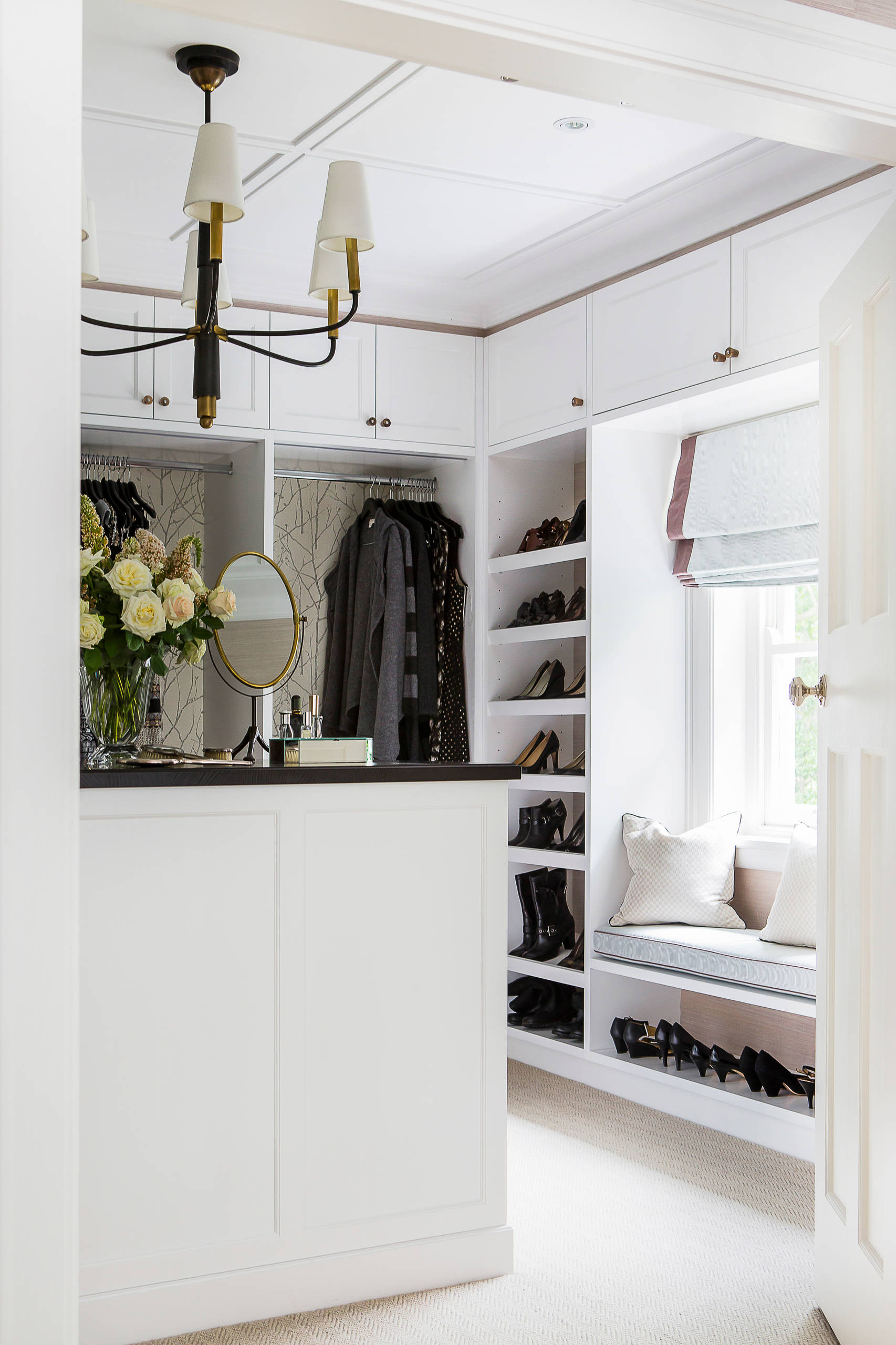

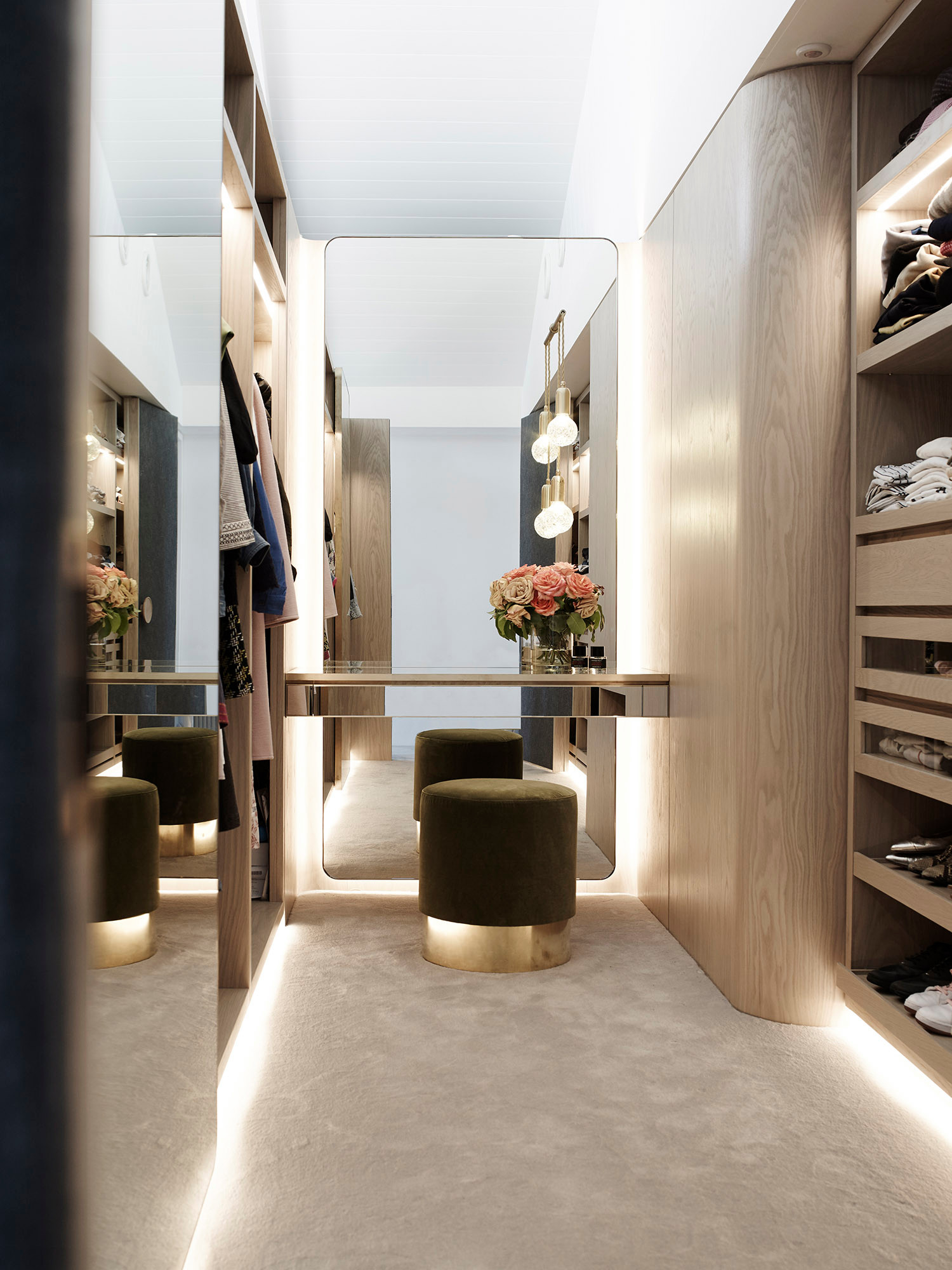
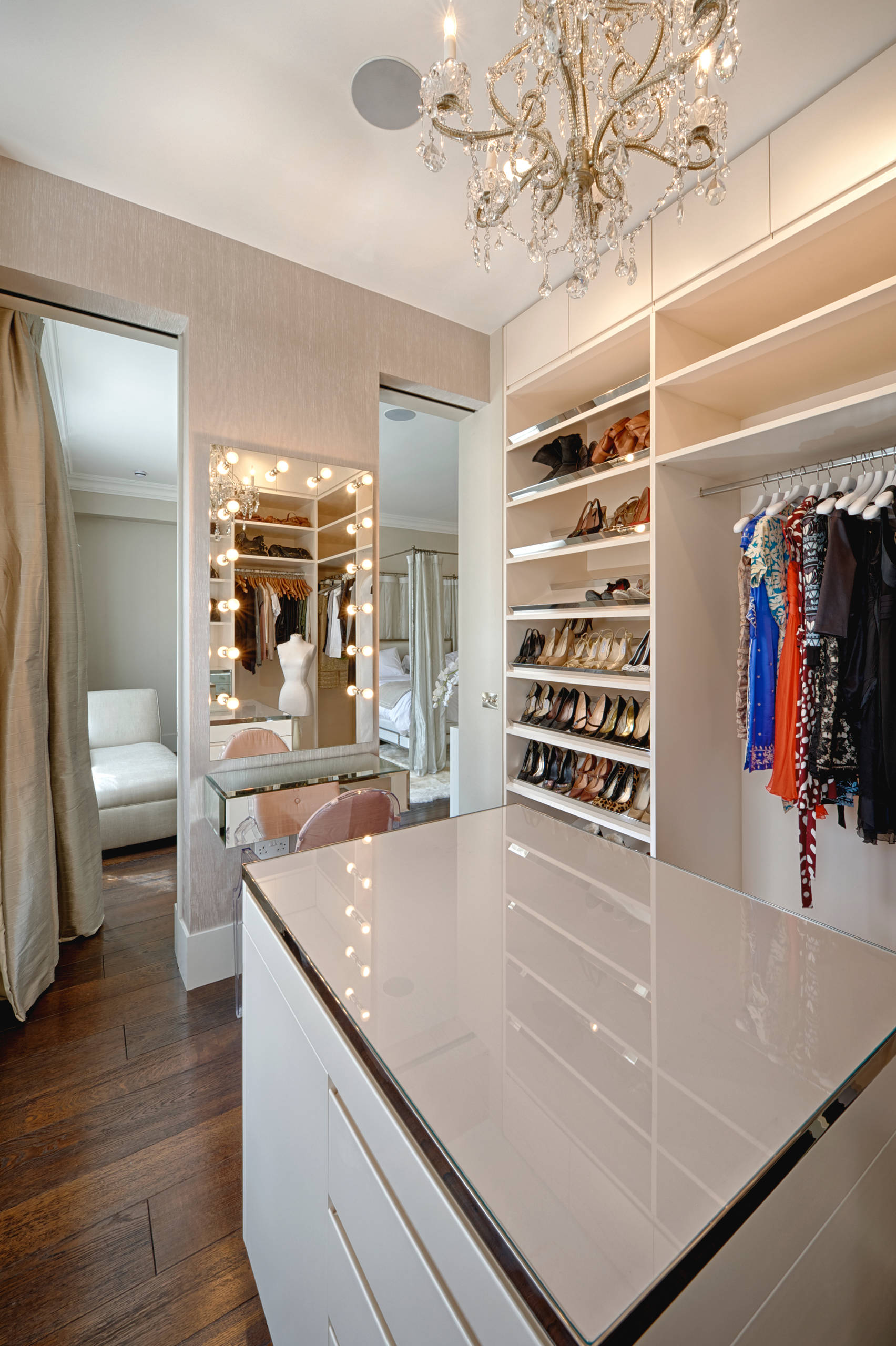
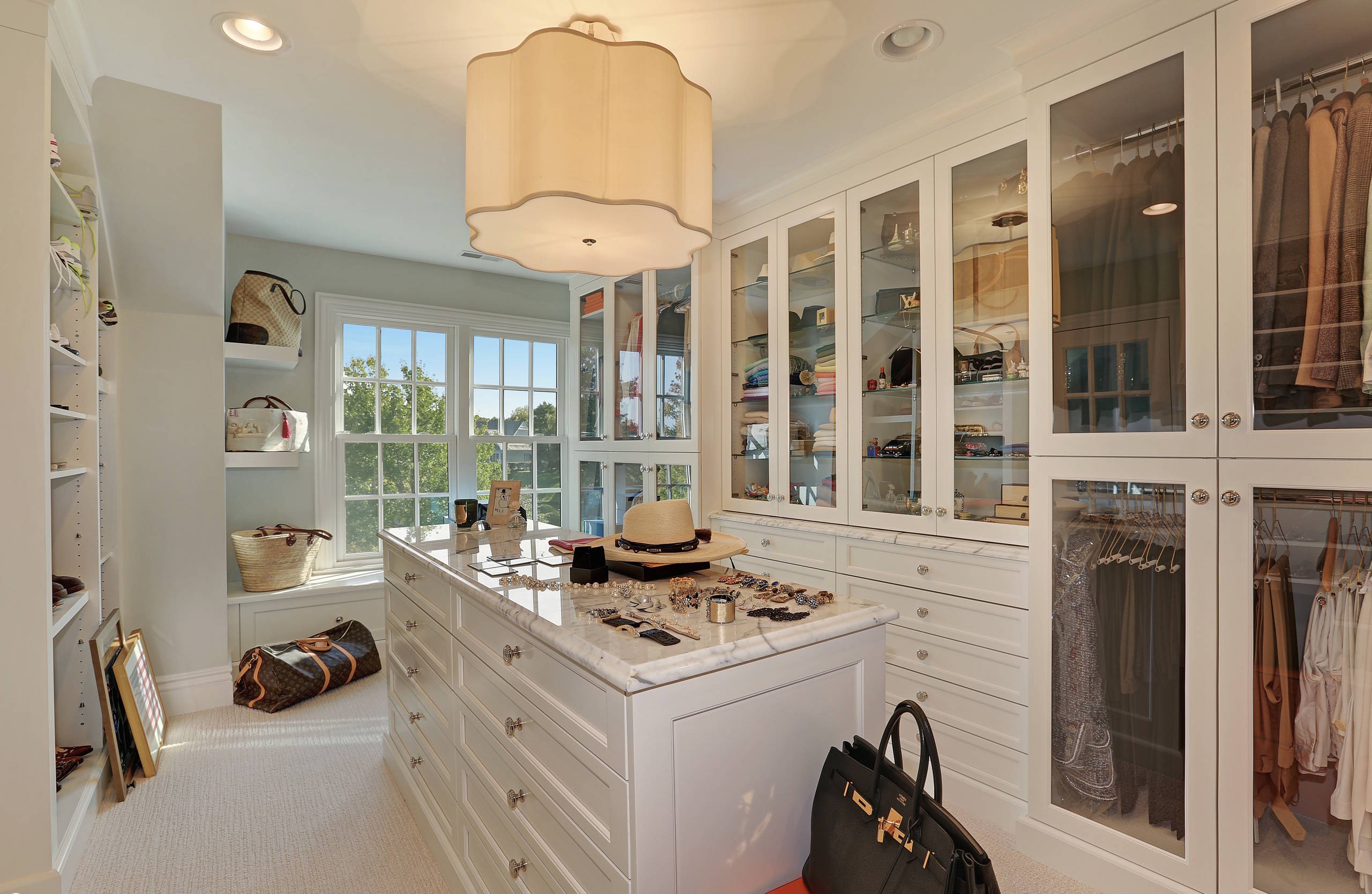
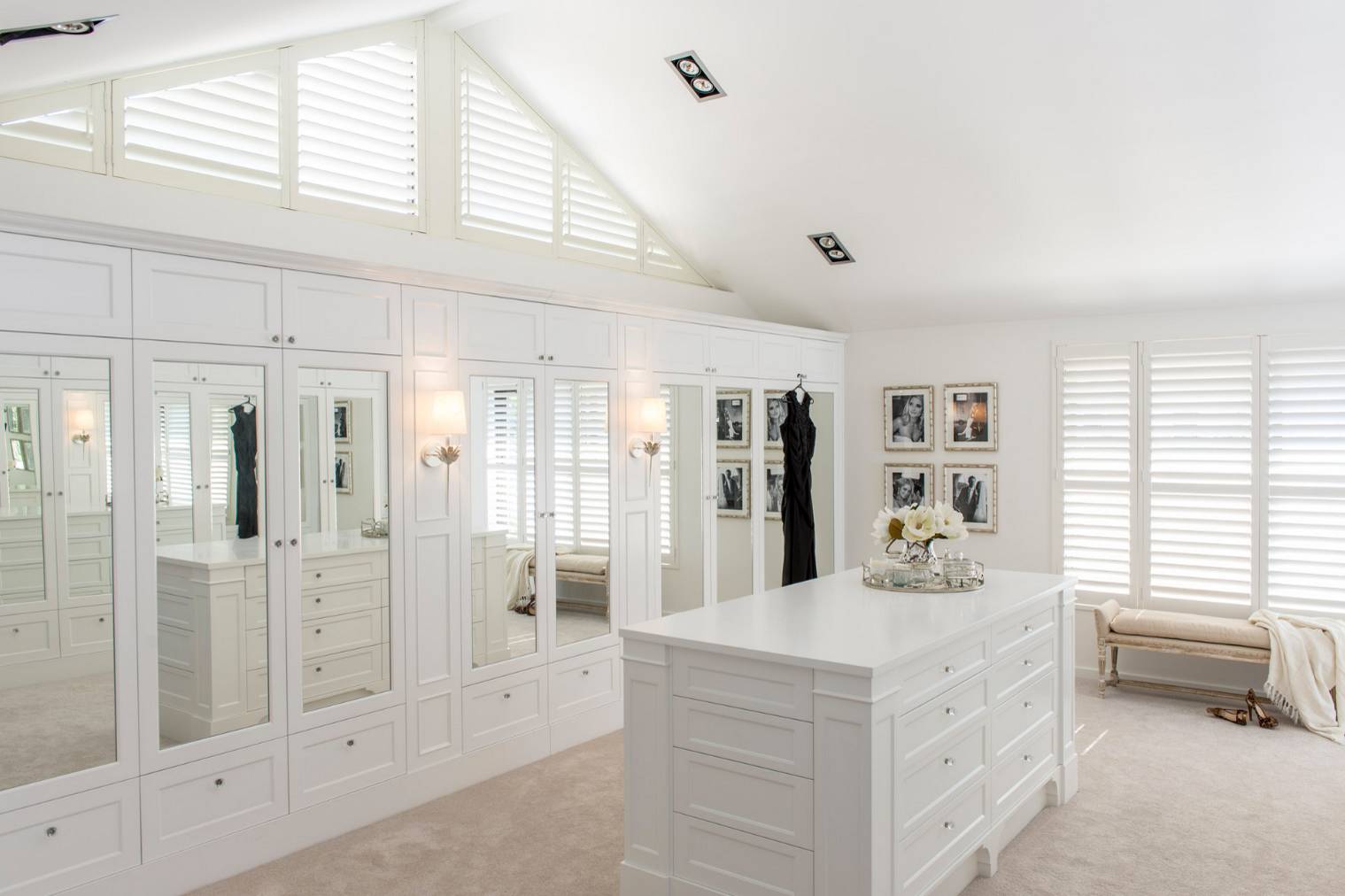
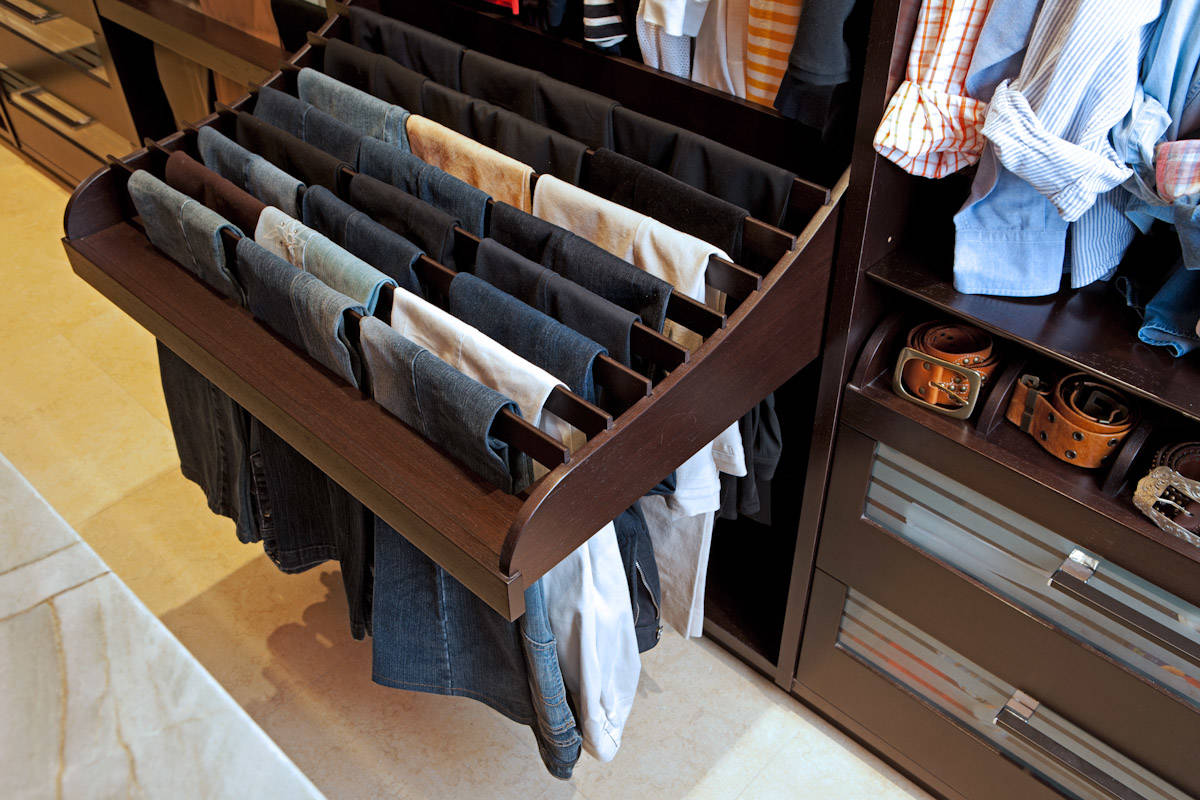

The depth of a wardrobe varies but it is commonly about 600 to 650 millimetres, including your doors. This allows enough room for clothes on hangers and bulky coats to fit comfortably inside. If you choose to have doors on your wardrobe, consider whether hinged or sliding doors are better suited and if you have room for either.